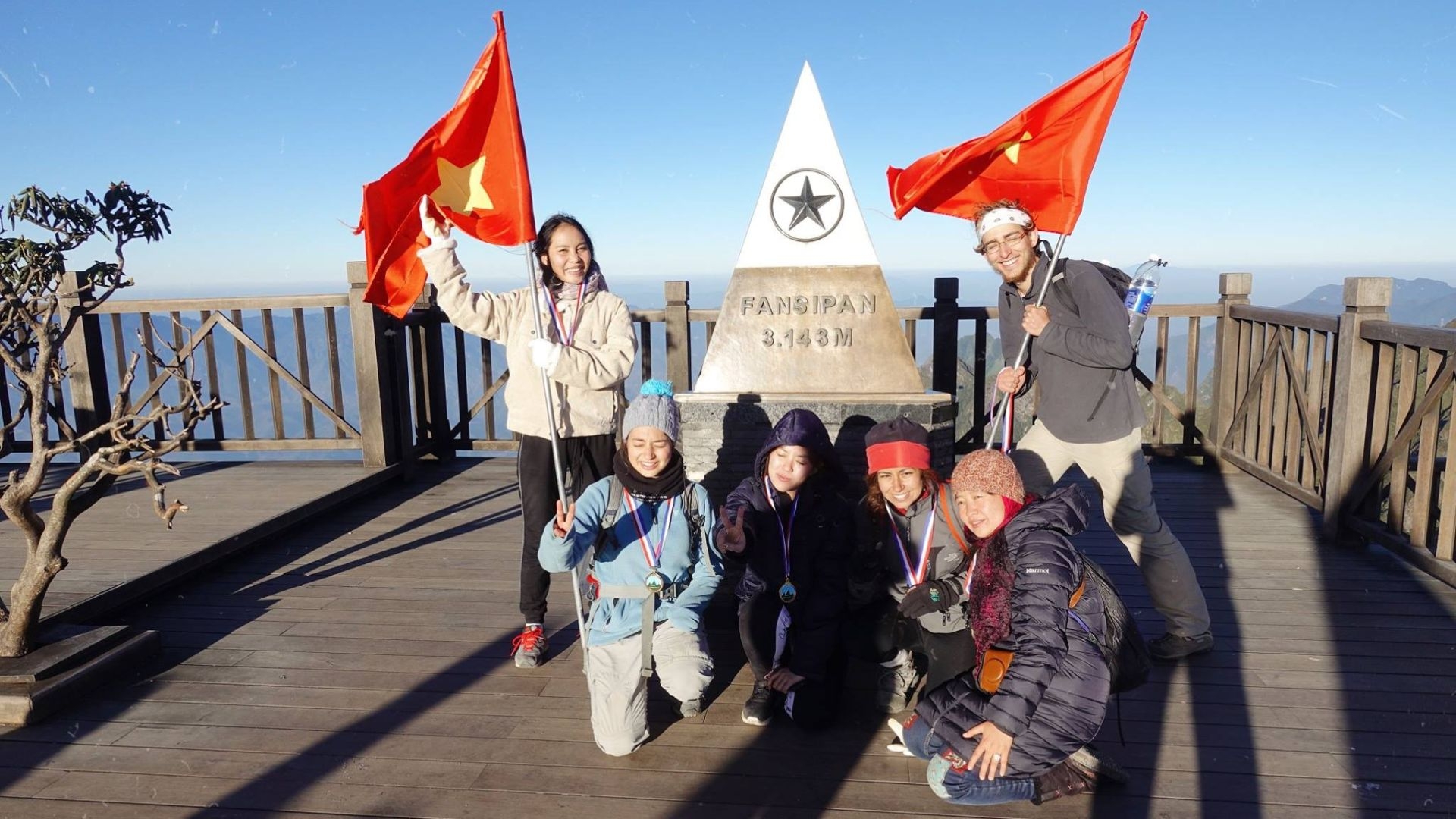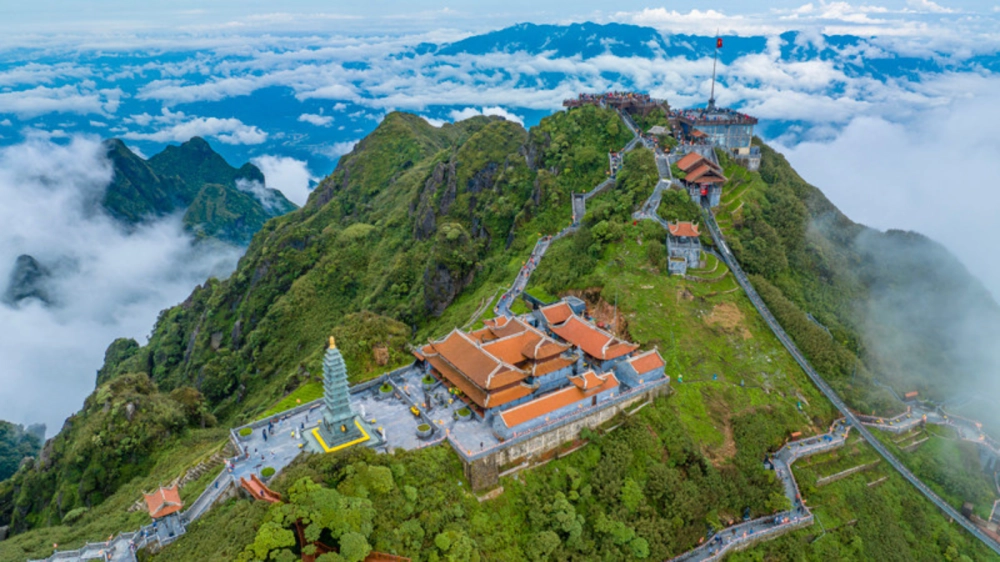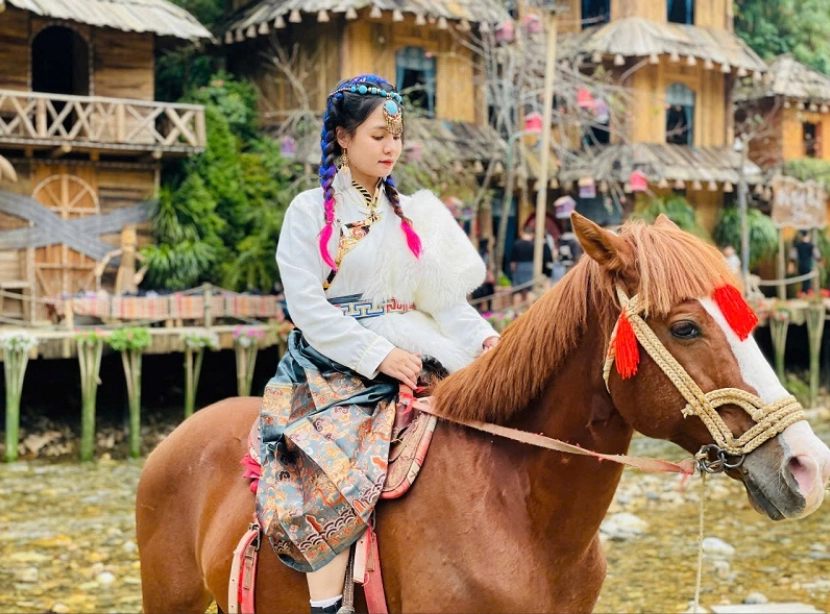1. Where is Fansipan? Overview of the famous Northwest destination
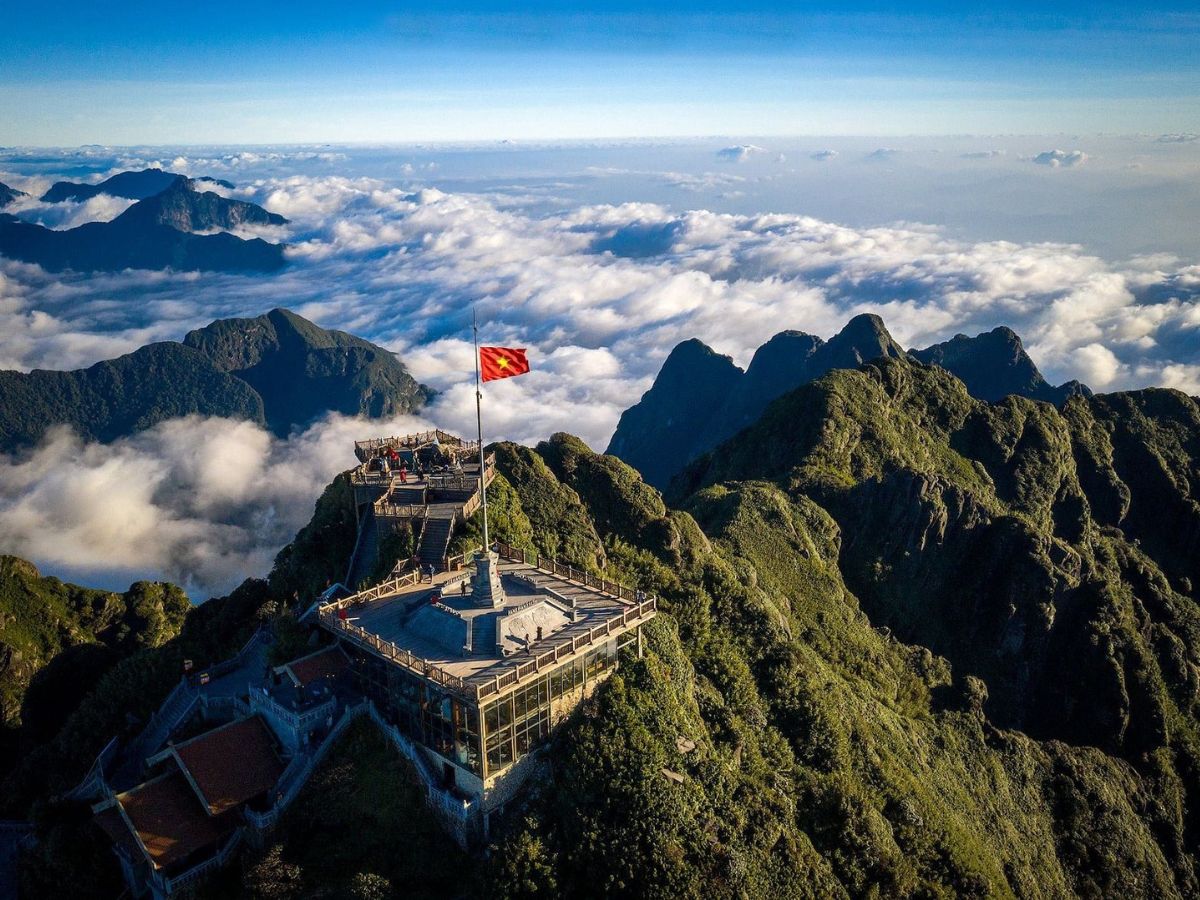
Fansipan is known as the "roof of Indochina". (Source: Collected)
Located within the majestic Hoang Lien Son mountain range in Lao Cai Province, the summit reaches an official height of 3,147.3 meters, as confirmed by Vietnam’s Department of Survey and Mapping, making it the highest peak in Vietnam.
From Sa Pa’s town center, travelers only need to travel about 9 km southwest to reach the foot of Fansipan and begin their ascent.
As the “Roof of Indochina,” Fansipan marks the highest point shared among Vietnam, Laos, and Cambodia. The mountain impresses visitors with its magnificent scenery, deep valleys, cool year-round climate, and rich biodiversity. In particular, the Sun World Fansipan Legend complex has helped transform Fansipan into a cultural and spiritual symbol of Northwest Vietnam.
Conquering Fansipan is an unforgettable experience. Visitors can chase clouds at sunrise, admire rhododendrons in full bloom from February to March, or gaze upon golden terraced fields during the harvest season. Whether you’re a trekking enthusiast, traveling with family, or an elderly visitor, the journey to the summit brings a profound sense of achievement and pride.
2. Best Time to Visit and Preparation Tips
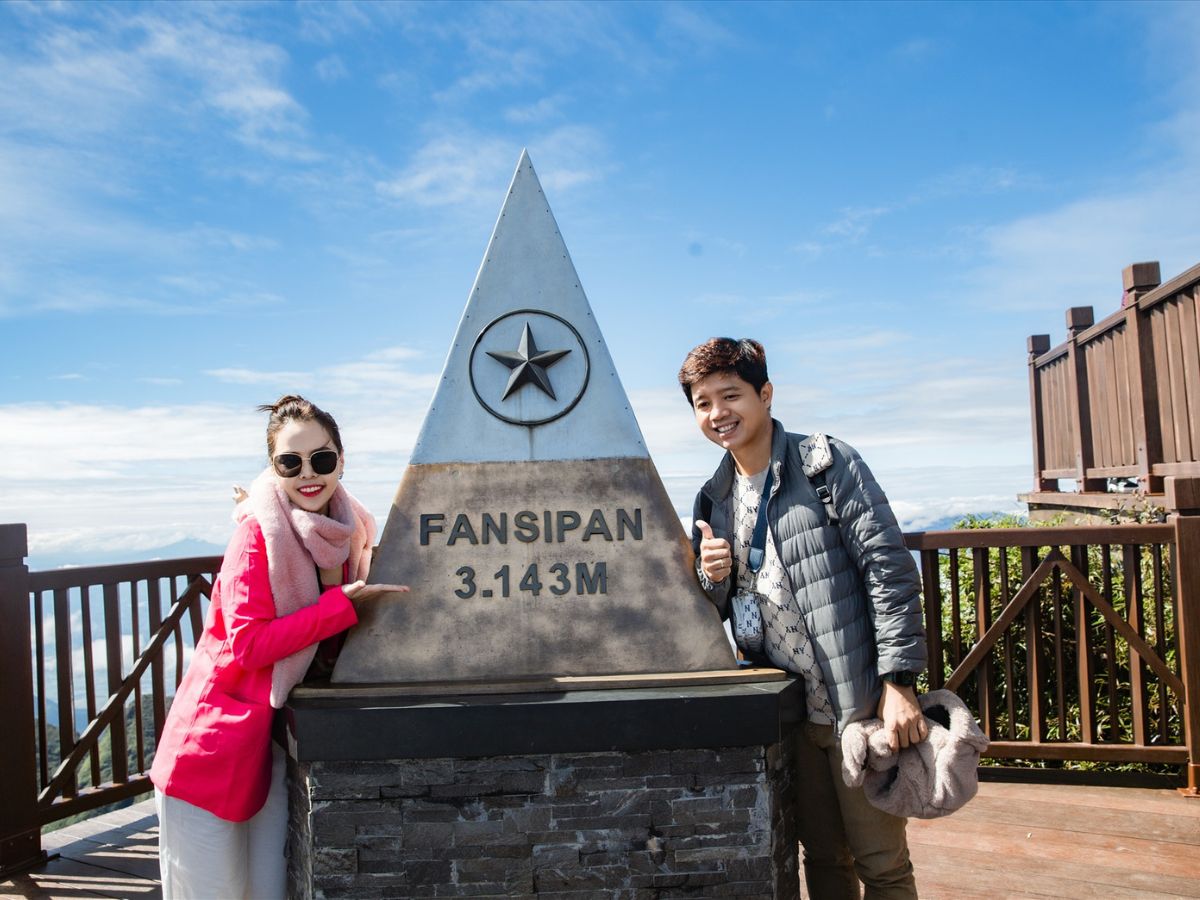
To fully enjoy the “Roof of Indochina,” choosing the right time and preparing well is essential. From clothing and health to personal documents, each detail helps ensure a safe and memorable Fansipan experience.
2.1 When to Visit Fansipan: Weather and Ideal Seasons
One of the most important Fansipan travel tips is picking the perfect time. From February to March, visitors can admire the signature rhododendron blossoms of the Hoàng Liên Sơn range. The weather is mild and pleasant — perfect for sightseeing. The mountain slopes covered in pink flowers create a rare and romantic landscape.
Another ideal period is September to November, known as Fansipan’s “golden season.” With clear blue skies, floating white clouds, and glowing golden rice terraces, this is also the best cloud-hunting season of the year.
However, since mountain weather in the Northwest can change suddenly, you should check the weather forecast carefully before your trip.
2.2 What to Prepare: Clothes, Health, and Documents
Choosing the right outfit determines whether your Fansipan journey will be comfortable. Pack layered warm clothing for easy adjustment, along with a windproof and waterproof jacket. A good pair of trekking shoes or soft-soled sneakers with strong grip is essential for safety on stone steps and trails.
If it’s your first time reaching altitudes over 3,000m, bring altitude sickness medicine. Take Vitamin C and stay hydrated to maintain energy. Don’t forget important documents like ID cards or passports, as they’re often required for hotel check-ins, ticket purchases, or tours.
3. How to Get to Fansipan

To reach the summit, travelers must first get to Sa Pa, then continue to the Fansipan Legend cable car station. Choosing the right transportation makes the trip more convenient and enjoyable.
3.1 From Hanoi or Ho Chi Minh City to Sa Pa
From Hanoi, many travelers take a sleeper bus because it’s convenient and affordable — around 250,000–400,000 VND per trip. Night buses help save hotel costs and arrive early in Sa Pa, ready for exploration.
Alternatively, the overnight train from Hanoi to Lào Cai offers a comfortable and safe experience. Ticket prices range from 350,000–750,000 VND, depending on seat type. From Lào Cai Station, it takes 35–50 minutes by bus or taxi to reach Sa Pa town.
Travelers from Ho Chi Minh City or southern provinces can fly to Hanoi or Lào Cai and continue the journey from there.
3.2 From Sa Pa Town to Fansipan Legend Cable Car Station
Once in Sa Pa, getting to the Fansipan Legend cable car station is easy. Taxis cost about 50,000–100,000 VND per trip, ideal for groups or those with luggage. Budget travelers can opt for motorbike taxis.
A special experience not to miss is the Mường Hoa mountain train, departing from Sun Plaza. Instead of a 15–20 minute drive on winding mountain roads, this train takes only 6 minutes and offers stunning views of the Mường Hoa Valley. The round-trip ticket costs 200,000 VND, making it a convenient and scenic start to your Fansipan adventure.
4. Fansipan Legend Cable Car Experience
The Fansipan Legend cable car is the ideal way to conquer the “Roof of Indochina” safely and comfortably. Before you go, it’s helpful to know about ticket prices, operating hours, and highlights.
4.1 About the Fansipan Cable Car
Sun World Fansipan Legend is one of the most impressive tourism, spiritual, and resort complexes in Sa Pa. Its main highlight — the three-wire cable car, the first of its kind in Asia — stretches 6,292.5 meters and can carry up to 2,000 passengers per hour.
Cabins feature panoramic glass windows, offering 360° views of Mường Hoa Valley, Hoàng Liên Sơn Range, and charming ethnic villages below. Thanks to the cable car, everyone — from children to the elderly — can easily reach the top of Fansipan.
4.2 Tickets and Operating Schedule (2025 Update)
-
Adults: 800,000 VND (round trip)
-
Children (1m–1.4m): 550,000 VND
-
Under 1m: Free
Operating hours:
-
Mon–Thu: 8:00 – 14:30 (last return 16:00)
-
Fri: 8:00 – 15:30 (last return 17:00)
-
Sat: 7:30 – 15:30 (last return 17:00)
-
Sun: 7:30 – 14:30 (last return 16:00)
Tickets can be purchased online via the Sun World Fansipan Legend website or Sun Paradise Land app (QR code access), or in person at Hoàng Liên Station and Sun Plaza.
Combo deals (until Dec 31, 2025):
-
Cable car + buffet: from 1,050,000 VND
-
Mường Hoa train + cable car + buffet: from 1,200,000 VND
-
Cable car + Mường Hoa train + summit train: from 1,150,000 VND
Booking online early helps avoid long queues during weekends and holidays.
4.3 The Journey: Cable Car and Đỗ Quyên Funicular
The cable car ride from Hoàng Liên Station to Đỗ Quyên Station lasts only 15 minutes, but offers the most breathtaking views of Mường Hoa Valley and the endless Hoàng Liên Sơn peaks.
At Đỗ Quyên Station, you can continue by funicular train to Trúc Mây Station, closer to the summit. Tickets cost 150,000 VND (up) and 120,000 VND (down) — perfect for children, seniors, or anyone who prefers to save energy instead of climbing the last 600 stone steps.
4.4 Exploring the Summit and Spiritual Complex
From Đỗ Quyên Station, the climb of 600 steps isn’t too challenging if you take your time. At the top stands the bronze statue of Amitabha Buddha, the highest of its kind in Asia.
Also remarkable are Kim Sơn Bảo Thắng Pagoda and Bích Vân Zen Monastery, surrounded by lush bamboo gardens and ancient bell towers — a serene, sacred atmosphere perfect for both prayer and photography. It’s one of the most iconic check-in spots on the mountain.
4.5 Dining and Shopping at the Summit
Within Sun World Fansipan Legend, visitors can enjoy delicious meals at restaurants like Hoa Hồng, Đỗ Quyên, Vân Sam Buffet, or Bản Mây Buffet. Dishes include traditional beef pho, Sapa salmon hotpot, and other Northwestern specialties, freshly prepared to warm you up after your climb.
Souvenir shops sell handcrafted brocade products, Fansipan-branded gifts, and other unique items at reasonable prices. Combo meal packages are also available for families and groups.
5. Trekking Fansipan: The Traditional Route
For adventure seekers, trekking to Fansipan via mountain trails offers a raw, immersive experience. Preparation, fitness, and safety awareness are essential.
5.1 Popular Trekking Routes: Cát Cát – Fansipan, Ô Quy Hồ
The Cát Cát – Fansipan route is popular among nature lovers. The 2–3-day journey passes through dense forests, streams, and steep slopes, testing your endurance and spirit.
The Ô Quy Hồ route is the most challenging, featuring rugged terrain and a longer distance — ideal for experienced trekkers seeking a more intense adventure. Always go with a local porter or guide who knows the terrain well to ensure safety.
5.2 Essential Gear and Health Preparation
Bring high-ankle trekking boots, thermal layers, rain gear, gloves, wool hats, headlamps, warm sleeping bags, and enough water and energy snacks. Train your body 2–4 weeks before the trip — jogging, stair climbing, or gym workouts help build endurance.
A medical check-up, especially for heart and respiratory health, is recommended. Never trek alone or without proper planning — Fansipan’s terrain can be unpredictable.
5.3 Safety and Environmental Protection Tips
Safety comes first. Always stay with your group and follow guide instructions. Understand basic terrain and weather patterns. Fansipan’s beauty deserves respect — follow the “Leave No Trace” principle: bring all trash down, don’t pick flowers, or disturb wildlife. Protecting Fansipan’s ecosystem ensures its wonder lasts for future generations.
6. Insider Tips: Real Experiences from Travelers
6.1 Cloud Hunting and Perfect Photos
The best time to hunt clouds is before 9 AM or after light rain in late autumn to early winter. Then, a sea of clouds floats like a silk ribbon embracing the peaks — a surreal view.
Wear bright-colored outfits like ethnic patterns or vivid dresses for standout photos. Avoid green or brown, which blend into the landscape. Great photo spots include the outdoor steps, Amitabha Buddha statue area, and bamboo garden.
6.2 Money-Saving and Comfort Tips
Leave large luggage at your hotel and bring a light backpack. Check Fansipan weather apps beforehand to avoid rain or fog. Book cable car and train tickets online to save time and possibly get discounts.
Bring medication for altitude changes like headache or dizziness relief — especially for seniors or children. Proper preparation ensures a safe, fulfilling Fansipan adventure.
Fansipan travel experiences 2025 are your ultimate guide to conquering the “Roof of Indochina.” Get ready to embrace the majestic scenery, cool mountain air, and unforgettable memories on top of Vietnam’s highest peak.




